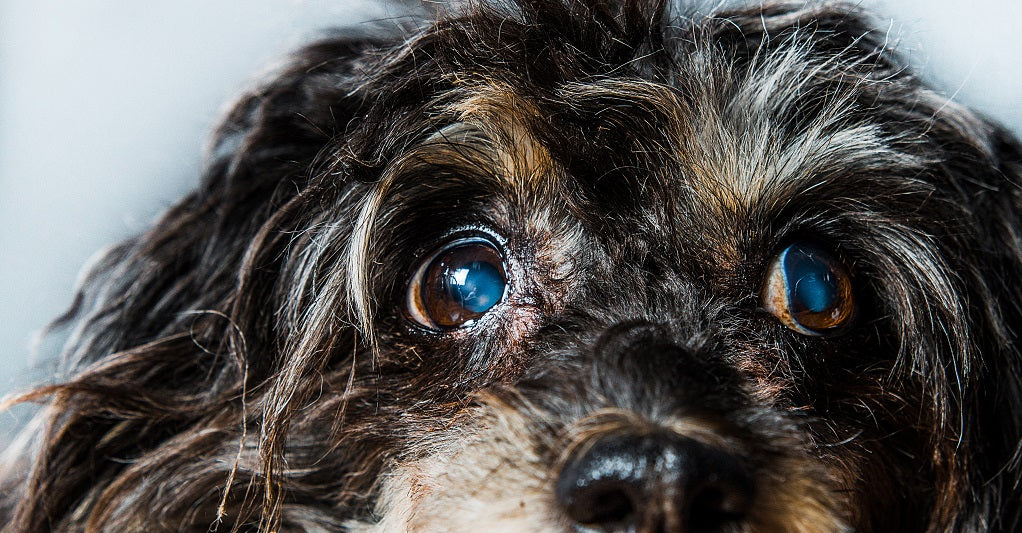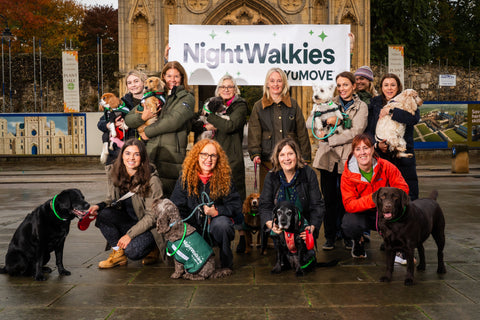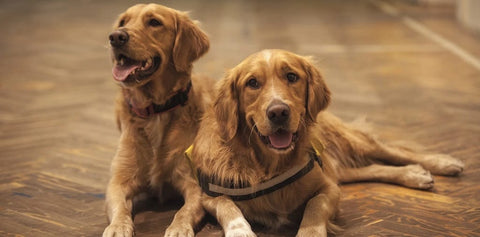

Exercising Your Sight-Impaired Dog
Dogs of all ages and with all levels of ability need their daily exercise, and this is equally true for those that have sight impairments. Helping them stay active is great for their overall wellbeing, fitness and dog joints. You’ll also make sure you maintain that vital bond with your pooch.
If your dog is sight-impaired, they can still have fun, get out in the fresh air and enjoy plenty of activities. You might need to adapt your approach here and there, but it’s all completely do-able.
Here we take a look at the signs of sight impairment and the best ways to exercise a dog with limited or no sight.
Why do dogs lose their sight?
Dogs can lose their vision either partially or completely for a variety of reasons. Their vision can deteriorate as they get older as a consequence of the ageing process. Other common reasons include cataracts, glaucoma, dry eye syndrome, in-grown eyelids, corneal ulcers and retinal degeneration.
Sadly, dogs can also lose their sight because they’ve had tough lives. Perhaps they’ve been forced to live on the street and have not had the veterinary support they needed at a critical moment to prevent sight impairment or complete loss of their vision.
Spotting canine blindness and vision loss
Interestingly, it can be quite tricky to spot the signs when your dog’s sight is deteriorating. If you’ve lived in the same home for a while, your dog may know their way around the place well enough without needing 20:20 vision. Alternatively, if you have more than one dog, the dog who’s losing their sight may be happy to follow the lead of their canine chum and you may be none the wiser.
For these reasons, some dogs lose up to 80% of their vision before their owners notice.
Having said that, here are the most common signs that your dog is having problems with their eyesight:
- They bump into walls or furniture.
- They stop chasing after a favourite toy.
- They have trouble finding their food or water bowl.
- They seem more hesitant about going up or down stairs, jumping off furniture or out of the back of your car.
- They react more fearfully to the sudden appearance of people, other dogs and objects.
How to prevent canine sight loss
If you notice any of the signs mentioned above, do take your pooch to the vet. In fact, regular veterinary check-ups are the best way to prevent your dog’s sight from deteriorating. As with humans, eye problems can be a sign of other underlying issues, so it’s always worth taking a preventative course of action where you can.
Zest for life
Even if your pooch is partially sighted or completely blind, they can still retain their zest for life, their love of a good walk and their absolute adoration of the human who’s there by their side.
When it comes to exercise, a little lateral thinking pays dividends. Games that rely on a sharp sense of vision such as throwing a ball or navigating an obstacle course are out. However, your dog’s senses of smell and hearing are extremely acute, so bring them into play instead.
Games for sight-impaired dogs
Here are a few ideas for games to play with a dog who’s sight-impaired:
- Get a toy that rings, rattles, squeaks, jingles or quacks. Whether it’s a honking duck or a squeaking giraffe toy, your hound will enjoy tracking down a toy that makes a noise.
- Engage your dog’s phenomenal sense of smell with a scented toy. Vanilla and lavender are popular scents, as well as the perennial favourite: the bacon-scented tennis ball. The Blue Cross shares this idea for a ‘snuffle mat’ where you hide treats under a mat and give your pooch the task of sniffing them out.
- A gentle Tug of War game is a great way to keep your sight-impaired dog entertained. It will stimulate your pooch both mentally and physically, as well as helping to build the bond between the two of you.
How to exercise safely
You can still enjoy the great outdoors with a sight-impaired dog, although it makes sense to make a few adjustments. It’s wise to keep your dog on the lead at all times and you’ll have to watch out for any potholes or overhanging branches that might get in your pooch’s way.
Some owners of blind dogs wear small jingle-type bells on their shoes or belt when they go out for walks, so their dog is always reassured that their human is close by. We’ve even heard of families where each person wears a bell with a slightly different ring so that the dog will associate a particular sound with each family member.
Get your paws on a treadmill
Doggy treadmills aren’t cheap; you’re looking at an investment of around £500-£800. But if you can afford it, they offer a safe way for you to build your pooch’s confidence and make sure that they get enough exercise. A good canine treadmill will help your dog to exercise safely, stay at the right weight, keep their joints healthy and maintain their cardiovascular system.
With a partially-sighted or blind dog, you’ll need to take it extremely gently at first and give your pooch time to get used to exercising this way. And, of course, you must guide them and watch over them at all times while they’re on the treadmill.
We recommend asking your vet for advice on the best model to buy. Alternatively, you could get in touch with your local animal physiotherapist, who’s likely to have a view on the right type of treadmill for your dog.
Find a qualified veterinary physiotherapist by contacting the National Association of Veterinary Physiotherapists (NAVP) or the Register of Animal Musculoskeletal Practitioners (RAMP).
Fancy adopting a sight-impaired dog?
They may lack 20:20 vision, but sight-impaired dogs still have a lot of love to give and can make wonderful companion animals. If this article has inspired you to find out more, contact these organisations:
- Blind Dog Rescue UK – a small charity that rescues blind and partially-sighted dogs throughout Europe. Their brilliant slogan is “the kind leading the blind”.
- Oldies Club – a UK organisation that helps find homes for senior dogs, including sight-impaired dogs. Have a look at their advice on blindness and sight problems in dogs.
Any advice to share?
Do you have a blind or partially-sighted dog? If so, do please share your photos and advice on exercise or any other aspect of caring for dogs with a visual impairment. We’d love to hear from you over on our Facebook and Instagram pages.


